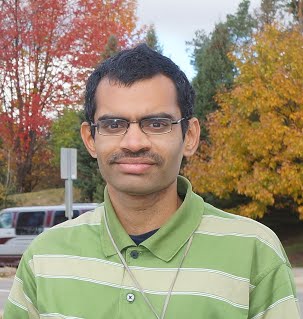
CITI Talk: “New achievable rate regions for fundamental network information theory problems”, Arun Padakandla (Purdue University, IN, USA), 17/07 14h


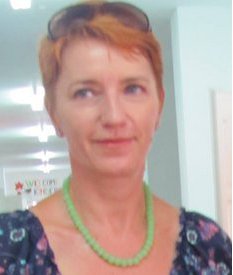
Gabriela Czibula, Prof., and Istvan Czibula, Ass. Prof, University of Babes-Bolyai, Computer Science Dept will present “Machine Learning for Solving Software Maintenance and Evolution Problems + Presentation of the Faculty of Mathematics and Computer Science, Babes-Bolyai University and MLyRE Research Group” at the CITI Lab on Monday, July 10th 2017.

Abstract
There has been a growing interest on understanding and optimizing Wireless Sensor Network MAC protocols in recent years, where the limited and constrained resources have driven research towards primarily reducing energy consumption of MAC functionalities. In this talk, we expose the prime focus of WSN MAC protocols, design guidelines that inspired these protocols, as well as drawbacks and shortcomings of the existing solutions and how existing and emerging technology will influence future solutions.
Bio
Abdelmalik Bachir received the graduate degree from the National Institute of Informatics, Algiers, Algeria, in 2001, the DEA diploma in informatics from the University of Marseille, France, in 2002, and the PhD degree from Grenoble Institute of Technology, France, in 2007. He took research positions at Avignon University, France Telecom R&D, Grenoble Institute of Technology, Imperial College London, as well as CERIST Research Centre, Algiers. Currently, he is a professor at Biskra University, Algeria and a consultant at Imperial Innovations. His research interests include: MAC and Routing protocols for wireless networks, wireless network deployment optimisation, mobile user mobility profiling, and inter-vehicle communication.
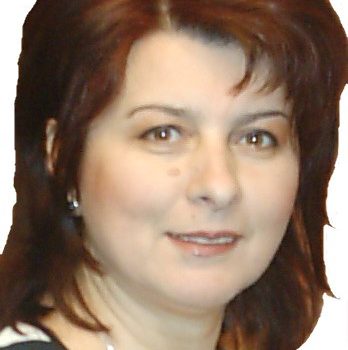
Abstract
In this talk, the class of anti-uniform Huffman (AUH) codes for anti-uniform sources with finite and infinite alphabets is considered. The characteristics of such sources as well as Huffman codes for such sources are first recalled. The sequence of bits corresponding to the output of a anti-uniform source encoded with a Huffman code is modeled by a Markov source. Its characteristics are derived from the encoding procedure describing the Huffman code. The Huffman encoding process is viewed as a transmission through a channel, which input would be the input symbols, and its output, the output bits.
The class of AUH sources is known for their property of achieving minimum redundancy in several situations. It has been shown that AUH codes potentially achieve the minimum redundancy of a Huffman code of a source for which the probability of one of the symbols is known. The AUH codes are efficient in highly unbalanced cost regime, with minimal average cost among all prefix–free codes. These properties determine a wide range of applications and motivate for the study of these sources from the information theory perspective.
Starting from the AUH structure, the average codeword length, the code entropy and the average cost are derived. These results are customized for finite and infinite sources with different distributions (Poisson, negative binomial, geometric and exponential).
Bio
Daniela Tarniceriu (PhD. 1997) is a full professor at the Technical University “Gh. Asachi” of Iasi, Romania since 2001. Her research interests are in the fields of information theory, digital signal processing, statistical signal processing, data compression and encryption. She is the co-author of 8 books, 85 journal papers and 65 conference papers. She was involved in several research grants: two as scientific leader, two as coordinator, and 12 as scientist.
Since 2016, she is the Dean of the Faculty of Electronics, Telecommunications and Information Technology (ETTI) of the Technical University “Gh. Asachi” of Iasi, Romania and between 2008 and 2016 she was the head of the “Telecommunications” Department of the ETTI. Since 2013 she is the head of the Doctoral School of the ETTI.

Abstract
Recent advances in synthetic biology and chemistry are making it possible to form
networks consisting of nanoscale devices—known as nanomachines—with
applications in medicine and environmental protection. These nanoscale devices,
often known as nanomachines, have a limited ability to sense their environment,
communicate and take simple actions. A key potential application is therefore event
detection, where the nanoscale network seeks to identify the presence of an
undesirable state, such as markers of an illness.
To support event detection, the nanoscale network must be able to communicate
observations from sensing nanomachines to a fusion center, where a decision can
be made. Due to strict size and energy constraints, this communication is a
challenging problem. Recently, a new approach known as molecular communication
has been proposed, where information is encoded in the state of molecules, such as
the release time, number, or type of molecules, which diffuse from the transmitter to
the receiver through a fluid. This new medium has dramatically different features
than traditional electromagnetic and accoustic media, which requires new channel
models, as well as encoding and decoding strategies.
In this seminar, I will introduce the principles of molecular communication,
highlighting the differences from traditional communication schemes. I will then show
how molecular communication can support collaboration in nanoscale networks. In
particular, I will present a new event detection scheme for nanoscale networks,
which accounts for the unique characteristics of the underlying molecular
communication links—known as the anomalous diffusion channel.
Speaker biography
Mai Cong Trang currently is PhD candidate in Molecular Communications under the
supervision of Dr. Trung Q. Duong at Queen’s University Belfast and Dr. Malcolm
Egan at INSA Lyon. He received the B.S. degree in Electronic and Electrical
Engineering in 2008 at Le Quy Don Technical University, Vietnam. Then, in 2013, he
received the M.S. degree in Electronics and Communications Engineering at The
University of Electro‐Communications, Japan. His current research interests include
Molecular Communications, Nanomachine Networks and Bio-inspired Networks.

Combination of Spatial Modulation and Full-Duplex for future Wireless transceivers
CITI Lab. Centre of Innovation in Telecommunications and Integration of Service (www.citilab.fr)
Guillaume Villemaud
guillaume.villemaud@insa-lyon.fr
Usually in wireless communications, the wireless medium is a shared and limited resource. Current wireless standards always share the medium with Half-Duplex principle: the transmission and reception of signals are done in two separate time slots or two different frequency bands. Besides, the transceiver can only transmit and receive one signal at the same time at the same frequency.
More recent research works [1-3] are focusing on an alternate approach: instead of sharing the medium with Half-Duplex principle, the entire licensed frequency band is shared for simultaneous transmission and reception, what is called Full-Duplex. The major drawback of this kind of Full-Duplex system is therefore that a very high level of interference is created by the transceiver itself while trying to receive a distant signal (known as the self-interference). Besides, the concept of MIMO communications is widely used, but supposes a large increase in the complexity, cost and energy consumption of multi-antenna transceivers. Using Spatial Modulation is a very promising way of developing simpler MIMO transceivers [18], and could be particularly relevant in combination with Full-Duplex.
Our laboratory has already a strong and recognized background on Full-Duplex communications [4-9]. A first thesis was dedicated to this subject, paving the way for more realistic developments and applications. Besides, another thesis has started last year, to study the theoretical bounds of physical layer secrecy by using FD.
Therefore, we have already proposed an architecture enabling FD communications. To approach this goal, we use an active analog radio frequency self-interference cancellation (AARFSIC) method or a combination scheme of the AARFSIC and active digital self-interference cancellation in time domain (ADSICT) to cancel the strong self-interference (SI) induced by the Full-Duplex principle. Based on the Full-Duplex radio, we proposed a flexible Full-Duplex Dual-Band (FDDB) OFDM radio transceiver by combining the Dual-Band RF front-end with Full-Duplex.
These proposed architectures have been studied in theory and in simulations, thus one goal of this thesis will be to develop some practical experimentations of Full-Duplex communications, based on Vector Signal Generators and Vector Signal Analyzers, in connection with simulated parts for digital processing purpose. Furthermore, some experiments in the Cortexlab facility is also an objective of this work (www.cortexlab.fr).
Wireless communications, RF architecture, digital processing, full-duplex, MIMO, Spatial modulation.
In the past years, considerable efforts have been devoted to prove the potential of using in-band full-duplex for future wireless communications, both from the hardware side and the networking side. The major difficulty of IBFD being the large amount of self-interference (SI), this interference is mitigated at three levels in the transceiver: antenna cancellation, analog cancellation, and digital cancellation. However, most of the proposed structures are inherently limited to fixed narrowband operations and almost no system-level demonstrations exist that prove the value of IBFD beyond a straightforward bi-directional link. Moreover, most of existing studies are based on theoretical analyses, simulations, or simple experimental testbeds.
Therefore, the goal of this thesis is threefold:
– To propose and develop some wideband and/or flexible radio architectures dedicated to full-duplex communications, using Spatial Modulation, from the antenna to the digital compensation implementation;
– To develop a complete study and optimization of this kind of architecture, starting from theoretical performance, going to simulation frameworks, and developing a proof of concept;
– To establish some reference scenarios to be tested with this proof of concept, for specific applications in practice beyond the usual toy-example of a straightforward bi-directional. In particular, we plan to explore and demonstrate applications such as secure communications through self-jamming, or the use of primary-user detection in Cognitive Radios.
As stated above, the main problem of Full-Duplex is to mitigate the strong Self-Interference created in the structure. Using Spatial Modulation enable to switch between several antennas to emit the signal of interest. Then, the challenge will be to receive a distant signal on unused antennas during this emission time, cancelling the Self-Interference and reconstructing the distant signal while switching at a high rate between the antennas.
To the best of our knowledge, it exists no actual combination of Spatial modulation and Full-Duplex. Only some theoretical bounds of potential performance of such a combination was proposed in [17] but without taking into account any realistic RF architecture. Thus an actual and functional architecture combining Full-Duplex and Spatial Modulation would be a great breakthrough.
The overall schedule of the thesis is quite simple. The first six months will be dedicated to an exhaustive state-of-the-art not only on Full-Duplex systems and Spatial Modulation, but also on all progress on wideband and flexible radio systems and on interference cancellation algorithms. The remaining of the first year will focus on building the framework of theoretical studies and the associated simulation tools.
The second year will be devoted to extensive theoretical and simulation investigations, as long as choice of the required equipment for experimentations. By the end of this second year, everything should be fixed in order to be able to begin experimentations in the third year.
The third and final year of the thesis will see the production of scientific results via publications of the most significant works, extensive experimentations with feedback on theoretical and simulation studies and global drawing of the potentialities of exploitation of the proposed techniques. A large dissemination to the community is planned in order to encourage the use of these approaches in future communication networks. Finally the thesis manuscript will be written and the thesis will be defended.
Apart from the material part, the proposed tools are the Matlab and the Keysight’s ADS software. The thesis will take place within the Inria Socrate team of the CITI laboratory (http://www.citi-lab.fr/).
Guillaume Villemaud (HDR, 50%), Florin Hutu (50%)
Of course, a large dissemination of the proposed works will be ensured in international conferences, high quality journals and potentially via patents. Our goal is also to collaborate in COST actions, particularly we are strongly involved in the new IRACON action (merge of the NEWCOM# and COST IC1004) and therefore this will offer a good place of interaction with other European partners. We also expect that this project will be a first step to build a larger consortium for future H2020 calls and to participate in the definition of new standards, particularly to encourage the integration of Full-Duplex in the 5G networks.
Moreover, this work could be naturally applied to IoT scenarios, therefore the context of the SPIE IoT Chair hosted at the CITI laboratory could be a rich place of interaction and collaboration.
Master of Sciences or Engineering degree in Telecommunications or Electrical Engineering with a strong background in radiocommunications, RF architectures and signal processing.
[1] A. Sabharwal, P. Schniter, D. Guo, D.W. Bliss, S. Rangarajan, R. Wichman, ‘In-band Full-duplex Wireless: Challenges and Opportunities’, IEEE Journal on Selected Areas in Communications (JSAC), 2014.
[2] B. Debaillie, D. J. van den Broek, C. Lavin, B. van Liempd, E. A. M. Klumperink, C. Palacios, J. Craninckx, B. Nauta, and A. Parssinen, “Analog/RF solutions enabling compact full-duplex radios,” IEEE Journal on Selected Areas in Communications (JSAC), 2014.
[3] H. Alves, C. Lima, P. Nardelli, R. Demo Souza, M. Latva-aho: “On the Average Spectral Efficiency of Interference-Limited Full-Duplex Networks”, CrownCom 2014, Oulu, Finland, June 2014.
[4] Z. Zhan and G. Villemaud, “Combination of Digital Self-Interference Cancellation and AARFSIC for Full-Duplex OFDM Wireless,” IEEE/CIC International Conference on Communications in China (ICCC), Shanghai, China, 13-15 Oct. 2014.
[5] Z. Zhan, G. Villemaud, F. Hutu and J-M. Gorce, “Digital Estimation and compensation of I/Q imbalance in Full-Duplex Dual-Band OFDM Radio,” The 25th IEEE International Symposium on Personal, Indoor and Mobile Radio Communications (PIMRC), Washington, DC, USA, 2-5 Sep. 2014.
[6] Z. Zhan, G. Villemaud, F. Hutu and J-M. Gorce, “Digital I/Q Imbalance Correction for Full-Duplex Dual-Band OFDM Radio Transceivers”, International Journal of Microwave and Wireless Technologies, 2015.
[7] Z. Zhan, G. Villemaud, J-M. Gorce, “Analysis and Reduction of the Impact of Thermal Noise on the Full-Duplex OFDM Radio”, IEEE Radio and Wireless Symposium (RWS) 2014, Newport Beach, Jan. 2014.
[8] Z. Zhan, G. Villemaud, J-M. Gorce, “Design and Evaluation of a Wideband Full-Duplex OFDM System Based on AASIC”, IEEE Personal, Indoor and Mobile Radio Communications Symposium, PIMRC2013, London, September 2013.
[9] Z. Wei, G. Villemaud, T. Risset, “Full Duplex Prototype of OFDM on GNURadio and USRPs”, IEEE Radio and Wireless Symposium (RWS) 2014, Newport Beach, Jan. 2014.
[10] Balatsoukas-Stimming, Alexios, et al. “On self-interference suppression methods for low-complexity full-duplex MIMO.” Signals, Systems and Computers, 2013 Asilomar Conference on. IEEE, 2013.
[11] Belanovic, Pavle, Alexios Balatsoukas-Stimming, and Andreas Burg. “A multipurpose testbed for full-duplex wireless communications.” Electronics, Circuits, and Systems (ICECS), 2013 IEEE 20th International Conference on. IEEE, 2013.
[12] Alexandris, K.; Balatsoukas-Stimming, A.; Burg, A., “Measurement-based characterization of residual self-interference on a full-duplex MIMO testbed,” Sensor Array and Multichannel Signal Processing Workshop (SAM), 2014 IEEE 8th , vol., no., pp.329,332, 22-25 June 2014.
[13] G. Villemaud, “Study of a Full-Duplex Dual-Band OFDM Transceiver”, DUPLO workshop, Crowncom 2014, Oulu, June 2014.
[14] Shanzhi Chen; Jian Zhao, “The requirements, challenges, and technologies for 5G of terrestrial mobile telecommunication,” Communications Magazine, IEEE , vol.52, no.5, pp.36,43, May 2014.
[15] Hossain, E., & Hasan, M. (2015). “5G Cellular: Key Enabling Technologies and Research Challenges”. arXiv preprint arXiv:1503.00674.
[16] G. Zheng, I. Krikidis, J. Li, A. P. Petropulu, and B. Ottersten, “Improving physical layer secrecy using full-duplex jamming receivers,” IEEE Trans. Signal Process., vol. 61, no. 20, pp. 4962–4974, 2013.
[17] B. Jiao, M. Wen, M. Ma and H. V. Poor, “Spatial Modulated Full Duplex,” in IEEE Wireless Communications Letters, vol. 3, no. 6, pp. 641-644, Dec. 2014.
[18] M. Di Renzo and H. Haas, “Performance analysis of Spatial Modulation,” 2010 5th International ICST Conference on Communications and Networking in China, Beijing, 2010

In this talk, Jean-Michel Fourneau will present some analytic solutions of Queueing Network models that jointly model the data packets and the energy consumed by the transmission and reception. These models are based on the energy discretization, we talk then about energy Packets.
Bio
Jean-Michel Fourneau is Professor of Computer Science at the University of Versailles St Quentin, France since 1992. He was formerly with Ecole Nationale des Telecommnications, Paris and University of Paris XI Orsay as an Assistant Professor. He graduated in Statistics and Economy from Ecole Nationale de la Statistique et de l’Administation Economique, Paris and he obtained is PHD
and his habilitation in Computer Science at Paris XI Orsay in 87 and 91 respectively. He is a member of IFIP WG7.3. His recent research interests are
algorithmic performance evaluation, Stochastic Automata Networks, G-networks, stochastic bounds, and application to high speed networks, all optical networks and energy consumption.
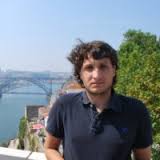
The defense will take place on Thursday 6th April at 14:00 in the Chappe Amphitheater, Claude Chappe building, INSA Lyon.
The presentation will be held in English with slides in English.
Paolo IENNE, EPFL Lausanne
Roselyne CHOTIN-AVOT, UPMC Paris
David THOMAS, Imperial College London
Frédéric PETROT, ENSIMAG, Saint Martin d’Hères
Olivier SENTIEYS, ENSSAT, Lannion
Florent DE DINECHIN, INSA Lyon
Digital filters are an important family of coarse operators resembling elementary functions: they can be specified at a high level as a transfer function with constraints on the signal/noise ratio, and then be implemented as an arithmetic datapath based on additions and multiplications.
The main result is a method which transforms a high-level specification into a filter in an automated way.
The first step is building an efficient method for computing sums of products by constants.
Based on this, FIR and IIR filter generators are constructed.
For arithmetic operators to achieve maximum performance, context-specific pipelining is required.
Even if the designer’s knowledge is of great help when building and pipelining an arithmetic datapath, this remains complex and error-prone.
A user-directed, automated method for pipelining has been developed.
This thesis provides a generator of high-quality, ready-made operators for coarse computing cores, which brings FPGA-based computing a step closer to mainstream adoption.
The cores are part of an open-ended generator, where functions are described as high-level objects such as mathematical expressions.
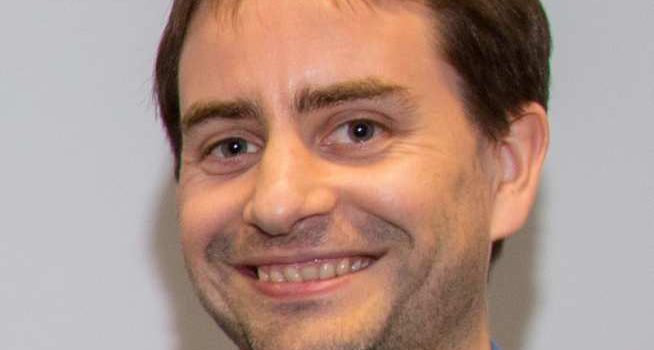
POETS : partially ordered event triggered systems
The POETS project is a five-year effort to build a combined software and hardware system which allows applications to be split into 1M+ concurrent state machines, and then to execute them on 100K+ concurrent hardware threads across 100+ tightly-coupled compute nodes. To achieve this we use an event-driven compute system with no global barriers or shared state, and re-write applications to use globally asynchronous algorithms. This talk will give an overview of the hardware that is being built, and show how applications such as finite-volume solvers can be re-cast as a asynchronous system.

The next CITI talk will take place on 27th March at 3 pm in room TD-C.
This talk entitled “Two Channels with Almost No Benefit from CSI” will be presented by Ligong Wang.
For many communication channels, causal or noncausal channel-state information (CSI) at the transmitter can help to significantly increase their communication capacity. In this talk we discuss two channels for which this is not the case. The first is the very noisy channel. We show that noncausal CSI at the transmitter provides little additional capacity improvement over causal CSI. The second channel is the Poisson channel with random, time-varying dark current. On this channel, capacity improvement from both causal and noncausal CSI is shown to be negligible.
Ligong Wang received the B.E. degree in electronic engineering from Tsinghua University, Beijing, China, in 2004 and the M.Sc. and Ph.D. degrees in electrical engineering from ETH Zurich, Switzerland, in 2006 and 2011 respectively. In the years 2011-2014, he was a Postdoctoral Associate at the Department of Electrical Engineering and Computer Science at the Massachusetts Institute of Technology, Cambridge, MA, USA . He is now a researcher (chargé de recherche) with CNRS, France, and is affiliated with ETIS laboratory in Cergy-Pontoise. His research interests include classical and quantum information theory, and digital, in particular optical communications.